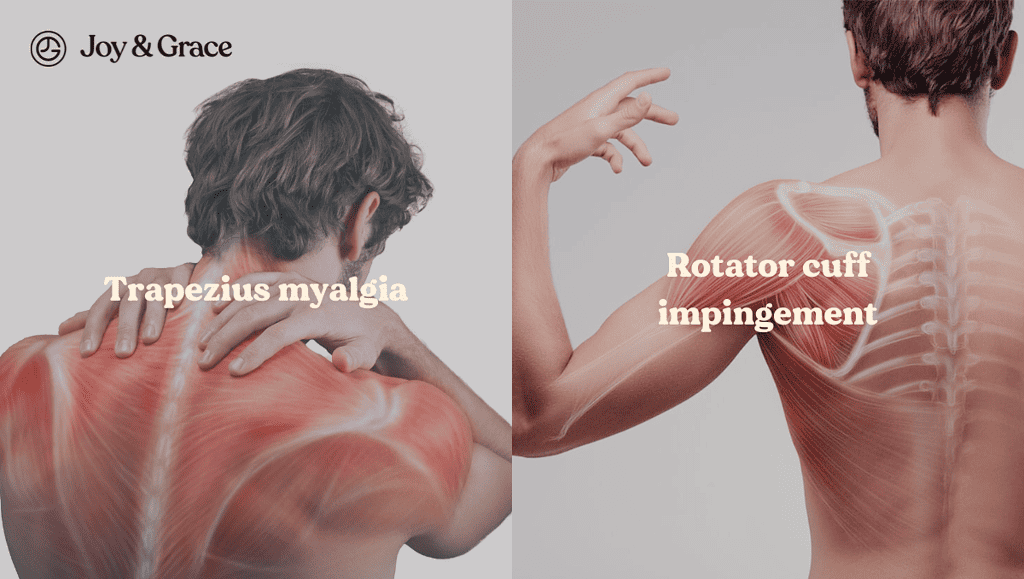It is well known that dental assistants are susceptible to neck and shoulder pain due to the nature of their work. According to the American Dental Association (ADA), more than half of all dental assistants experience some form of neck or shoulder pain during their careers.
Neck and shoulder pain can be debilitating, preventing you from doing your job correctly. If left untreated, it can also lead to long-term health problems.
In this guide, we'll show you some essential techniques that you can use to prevent or reduce, neck and shoulder pain. With these tips, you can stay healthy and pain-free for years to come.
3 Keys To Eliminating Neck Pain In Dentistry
Several published studies have discussed what dental workers can do to stay healthy.
The three key points to eliminate neck (and shoulder) pain in dental assistants have resulted to be:
- Good posture and proper positioning of the patient
- Regular rest breaks
- Exercises, which are made to address the specific risks associated with the dentistry profession.
Why Is Good Posture Important For Dental Assistants?
A healthy and well-trained dental assistant can boost a practice's efficiency and decrease stress for the whole team.
Paying attention to body posture and strain is essential. However, proper positioning of the patient is also necessary.
Here are some tips on how to improve your posture:
- Having an adjustable ergonomic stool with lumbar support and the ability to rotate
- While dentists should sit with their feet flat on the floor and their thighs parallel to the floor, dental assistants should be seated 4-6" higher and use a footrest on the stool.
- Patients descended with a 20-degree incline (while keeping the patient’s mouth at the same level as the dentist's elbow). This applies to lower jaw dental work. For upper jaw dental work, the patient should be fully reclined with the mouth at the dentist's elbow height.
Regular Rest Breaks
Studies suggest rest breaks of:
- At least 6 minutes each hour, with a 10-15-minute break every 2-3 hours.
Rest from static positions is especially important for the upper back (trapezius muscle) and forearm muscles.
Resting from repetitive actions can help with forearm and hand pain.
Regular rest breaks are essential. By resting, you can stay healthy and also be sure you're doing your job the best way possible.
Rest breaks also present an additional benefit. They offer an excellent time to exercise the muscles affected by dental assistance.
Exercises
Some of the exercises you can do include:
- Relaxing the arms at the side and shaking them
- Moving your muscles and limbs in the opposite direction of repetitive or static positions. This includes measures such as bending the neck backward after prolonged forward tilt, for example.
- Chin tuck exercises. Here is a simple way to do chin tucks for a beginner:
- Sit straight and look straight ahead with your ears right over your shoulders.
- Put your finger on your chin.
- Pull the chin and head straight back, without moving the finger, until you feel a good stretch at the base of the head and the top of the neck.
- If you can, hold for 5 seconds.
- Bring the chin back to the finger again.
- Repeat ten times or as many times as you can handle.
These simple exercises can go a long way to keep you healthy as a dental assistant. And as we mentioned earlier, you can also exercise while on rest breaks.
Musculoskeletal Symptoms Of The Neck And Shoulder Among Dental Practitioners
In general, dental practitioners can have a variety of muscle and joint problems in the neck and shoulders. These symptoms may include:
- Pain,
- Stiffness,
- Tingling
- Numbness, and
- Limitation in movement.
As we've mentioned, these symptoms can be caused by not being in the right position or using too much force during dental work.
Some Disorders That Dental Assisting Can Cause

Some of the common neck and shoulder conditions dental assisting can lead to include:
- Trapezius myalgia and
- Rotator cuff impingement
Trapezius myalgia
Trapezius myalgia commonly causes the upper trapezius muscle to hurt, be stiff, and feel tight. This can also lead to tightness or pain in the neck or shoulder.
It is often caused by long periods of standing still or doing the same thing over and over again at work. Which dental assistants need to do. A lot.
We have an article about exercises for neck and trapezius pain here.
Rotator Cuff Impingement
This disease is a painful condition of the upper limb that happens when the shoulder joint space gets smaller. It is also known as shoulder impingement syndrome.
Although it can happen for various reasons, static positions and repetitive shoulder movements may also be crucial factors.
This condition presents with symptoms such as:
- Pain in the top and outer side of your shoulder.
- Shoulder pain that gets worse when you lift your arm, mainly above your head.
- Shoulder pain or aching at night, which can also affect your sleep.
- Shoulder weakness
Is Dental Assisting Hard On Your Back?
Yes, dental assisting definitely is hard on your back.
A German study tried to review the frequency of back pain among dental professionals.
It turned out that 53% of the dental assistants and hygienists reported back pain during or after dental treatment.
Also, most participants said they had already gone to a doctor or physical therapist because of pain at work.
This is no surprise. Various studies have found that standing still puts more pressure on the discs between the vertebrae, which may lead to (mostly) low back pain.
Steps to prevent back pain are similar to those used for neck and shoulder pain. They’re also similar for all dental practitioners, which means they’re also helpful for dentists and dental hygienists as well.
They include things like:
- Stretching before work,
- Taking regular breaks,
- Doing tasks with good posture, and
- Reducing repetitive motion.
Takeaway
In this article, we've tried to review neck (and shoulder) pain among dental assistants.
We've understood that dental assistants may be prone to developing painful conditions such as shoulder cuff impingement if they're not careful about how they work.
The good side is this: The methods we've mentioned are very straightforward and don't take much time. And a healthy neck and shoulder go a long way in dental practitioners.
We hope this guide can help to keep you healthy, knowing just how important you are!















